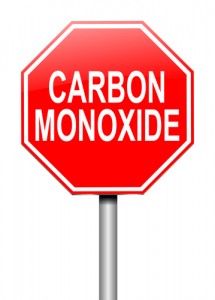Blog
Stay Safe! What you need to know about Carbon Monoxide
We all want to be safe and warm in our homes each winter, yet the heating and cooking equipment we use to keep ourselves cozy can actually pose a serious danger. When the fuel we use to power our furnaces or stoves doesn’t burn completely, a dangerous gas — carbon monoxide (CO)– is created.
CO is known as the invisible killer because it is colorless, odorless, and potentially deadly. You can protect yourself and your family, however, with these easy, common-sense, life-saving tips:
-
1. Install battery-operated CO detectors or CO detectors with battery backup.
- Install CO detectors in a central location outside each sleeping area and on every level of the home. For the best protection, interconnect all CO detectors throughout the home. When one sounds, they all sound.
- Follow the manufacturer’s instructions for placement and mounting height.
- Choose a CO detector that has the label of a recognized testing laboratory.
- Call your local fire department’s non-emergency number to find out what number to call if the CO detector sounds.
- Test CO detectors at least once a month; replace them according to the manufacturer’s instructions.
- If the audible trouble signal sounds, check for low batteries. If the battery is low, replace it. If it still sounds, call the fire department.
- If the CO detector sounds, immediately move to a fresh air location outdoors or by an open window or door. Make sure everyone inside the home is accounted for. Call for help from a fresh air location and stay there until emergency personnel arrive.
- Replace your CO detectors every 5-6 years. The sensors wear out and are required when you sell your house.
-
2. Never use any outdoor fuel-burning equipment inside homes or garages.
- Use portable generators outside only, far away from the home.
- Never bring a charcoal grill into the house for heating or cooking.
- Do not barbeque in the garage.
-
3. Never use a gas range or oven for heating.
-
4. Use your fireplace correctly.
- Open the fireplace damper before lighting a fire and keep it open until the ashes are cool.
- An open damper may help prevent build-up of poisonous gases inside the home.
-
5. Don’t warm a vehicle or run other fueled engines or motors in the garage.
- CO can build up even in an open garage.
- Make sure the exhaust pipe of a running vehicle is not covered with snow.
-
6. During and after a snowstorm, make sure vents for the dryer, furnace, stove, and fireplace are clear of snow build-up.
-
7. Know the symptoms of carbon monoxide poisoning.
- Headache, dizziness, weakness, nausea, vomiting, sleepiness, and confusion.
- If you suspect CO poisoning, get outside to fresh air immediately, and then call 911.
And, of course…
-
Have your home heating systems (including chimneys and vents) inspected and serviced annually by a trained service technician.
Denver area residents, be safe this winter. Call IAQ to schedule your service appointment today!
 1. Install battery-operated CO detectors or CO detectors with battery backup.
1. Install battery-operated CO detectors or CO detectors with battery backup.




